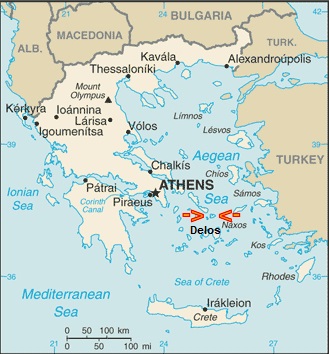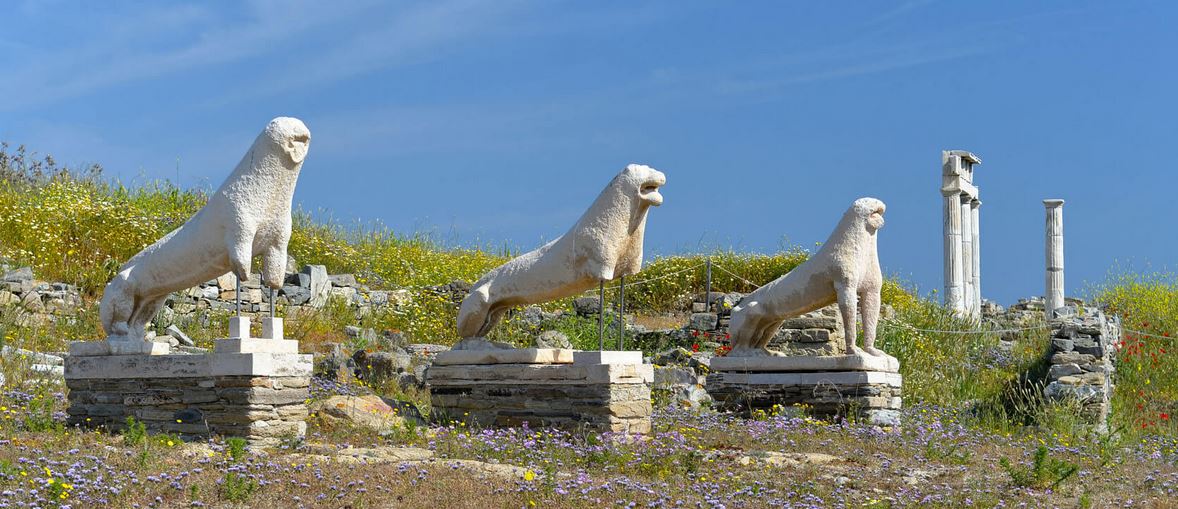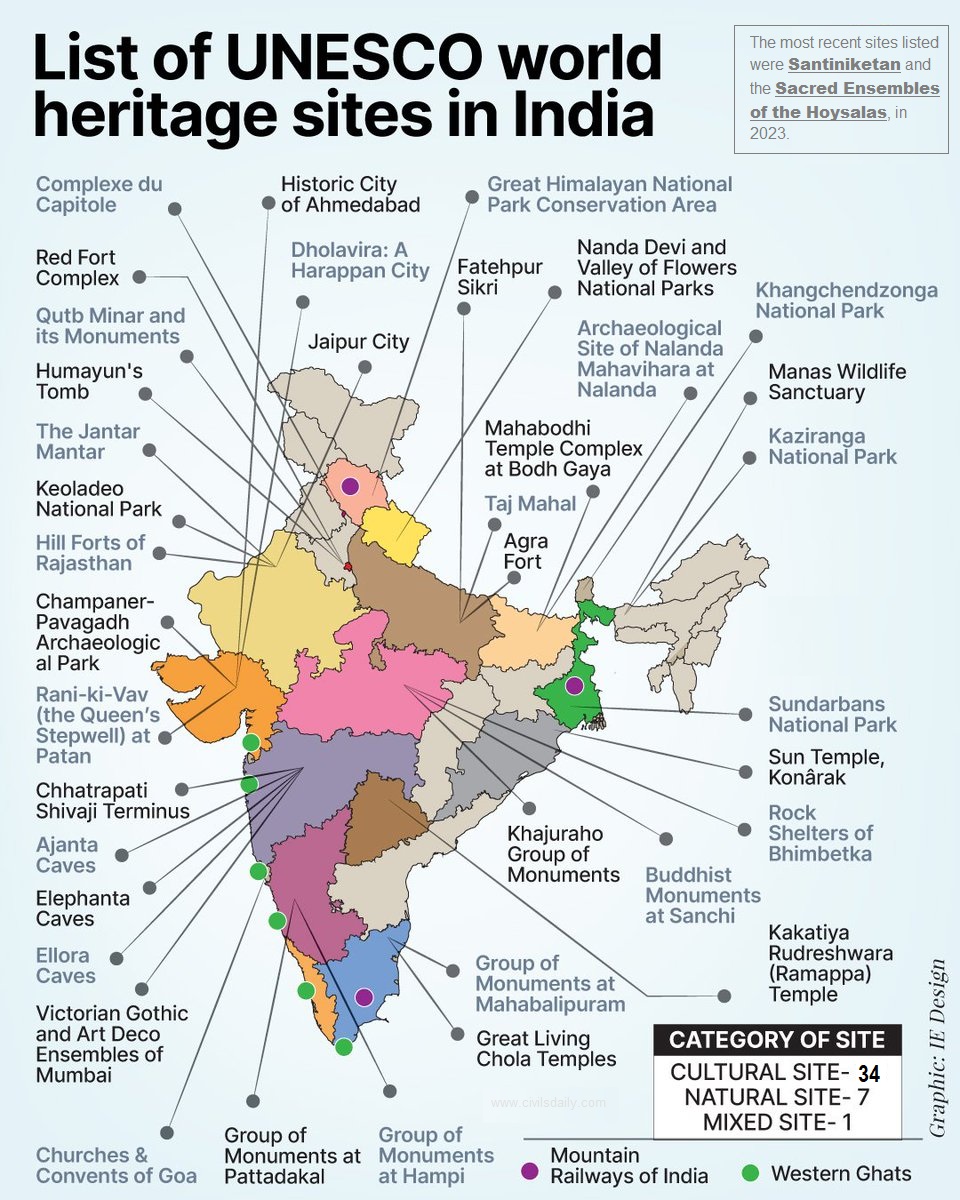Note4Students
From UPSC perspective, the following things are important :
Prelims level: Delos Monuments, World Heritage Sites, Various WHS in India

Why in the News?
- Delos, a UNESCO World Heritage site situated close to Mykonos, Greece, played a pivotal role as a sanctuary in the ancient Greek and Roman civilizations.
- Scientists warn that Delos faces imminent destruction within the next 50 years due to rising sea levels caused by climate change.

About Delos
- Delos is a small island located in the Aegean Sea, part of the Cyclades archipelago in Greece.
- It is considered as the birthplace of Apollo, the god of light, arts, and healing, and his sister Artemis, the goddess of the hunt.
- Its ancient ruins date back to the 3rd millennium BCE.
- These ruins include temples, houses, sanctuaries, theatres, and other public buildings.
- It served as a port and trading hub, connecting the civilizations of the eastern Mediterranean with those of the west.
- Delos was declared as a UNESCO World Heritage Site in 1990.
- Ruins and Monuments:
-
- Some of the most notable ruins and monuments on Delos include the Terrace of the Lions, the Temple of Apollo, the House of the Dolphins, the Theater District, and the Sacred Lake.
About UNESCO World Heritage Sites (WHS)
| Details | |
| Definition | A WHS is a landmark or area with legal protection by an international convention administered by UNESCO. |
| Criteria | WHS are designated for their cultural, historical, scientific, or other forms of significance. |
| World Heritage Convention |
|
| Number of Sites | There are currently 1,172 World Heritage Sites across 166 countries. |
| Types of Sites |
|
| World Heritage Committee | Evaluate nominated sites and inscribe them on the World Heritage List. |
| Preservation | Member states commit to protecting their World Heritage Sites. |
| World Heritage Fund | The fund, supported by member contributions, provides assistance for preserving sites. |
| Selection Criteria | Sites must demonstrate Outstanding Universal Value (OUV) by meeting criteria defined in the Convention. |
| Advisory Bodies | International Council on Monuments and Sites (ICOMOS) and the International Union for Conservation of Nature (IUCN) assess nominated sites. |
| Criteria for Cultural Sites | Six criteria for significance related to human creative genius, cultural interchange, unique testimony, outstanding examples of architecture, tradition, and events. |
| Criteria for Natural Sites | Four criteria for significance related to natural phenomena, Earth’s evolutionary history, ecological processes, and biological diversity. |
| Legal Status | Once inscribed, each site remains the property of the state it belongs to, with shared responsibility for its preservation and protection. |
| Obligations | Member states are obligated to integrate heritage protection into regional planning, report on-site conditions, and preserve sites for future generations. |
| Enforcement | The Committee may provide assistance, deploy experts, or delist sites in extreme cases of endangerment. |
Important Sites in India:
- There are 42 World Heritage Sites in India.
- Out of these, 34 are cultural, 7 are natural, and 1, Khangchendzonga National Park, is of mixed type.
- India has the sixth-most sites worldwide.
- The first sites to be listed were the Ajanta Caves, Ellora Caves, Agra Fort, and Taj Mahal, all of which were inscribed in the 1983 session of the World Heritage Committee.
- The most recent sites listed were Santiniketan and the Sacred Ensembles of the Hoysalas, in 2023.

PYQ:[2015] Which one of the following National Parks has a climate that varies from tropical to subtropical, temperate and arctic? (a) Khangchendzonga National Park (b) Nandadevi National Park (c) Neora Valley National Park (d) Namdapha National Park |
Get an IAS/IPS ranker as your 1: 1 personal mentor for UPSC 2024
